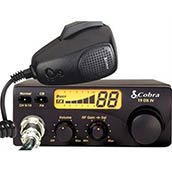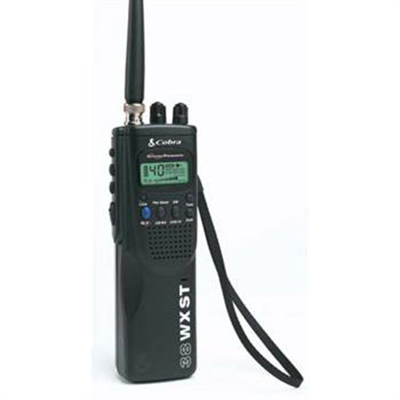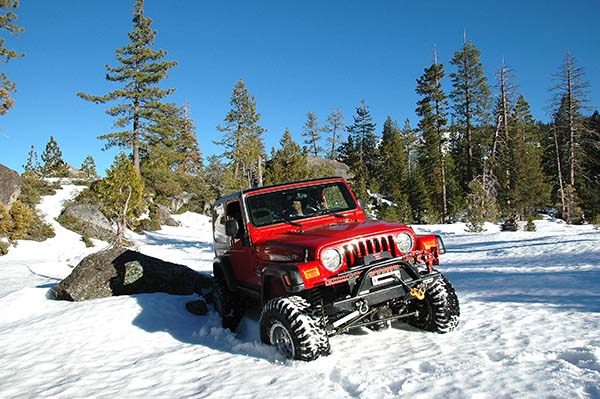Communicating Off the Grid
Stay Safe by Staying in Touch
In this Article
In large part, we love hitting the trail because it gets us away from all the noise. Out in the wild, there is no distracting television, no WiFi, no unwanted guests and no ringing cellphones. The resulting silence is a beautiful thing. However, it is still important to be able to communicate with your fellow wheelers on the trail, be able to make emergency calls or contact home. This is why one of the most important Jeep parts in your rig is a radio. There are a lot of choices when it comes to off-the-grid communication, but if you have the wrong type it could mean being stranded in the wilderness.
Common Communication Choices
A basic rule of thumb is one mile per watt of open distance. The difference comes in when you begin expanding that distance. On the whole, you need as much range as possible. Here are some of the most popular options:
- CB Radio – The CB (Citizen’s Band) radio is frequently a requirement of group trail runs – Jeep Jamborees, for instance. They have a very short range, limited to 4 watts by the FCC and are perfect for keeping in touch with the other Jeeps in your group. They are unregulated, meaning you do not need an operator’s license, and also are inexpensive.
Tip: If you are travelling with little ears, you might want to turn off the CB radio on the highway as you will be sharing the airways with truckers who may be using some choice vocabulary.
- FRS – FRS (Family Radio Service) is the off-roading equivalent of a walkie-talkie. They work well for small groups as long as you remain fairly close together. They are unregulated by the FCC unless you have an FRS-General Mobile Radio Service (GMRS) unit. These transmit at higher power levels and have the option of detachable antennas, but require a GMRS license to operate.
- Ham Radio – Amateur radio, often called “ham radio”, works in the same way the OEM radio in your Jeep works. They commonly have ranges upward of 50 watts and, by relaying transmissions through a radio repeater system, can theoretically reach any point on the globe from where you are.
Ham radios supply a high-quality signal with minimal static and garble, but can be expensive and require a license from the FCC. In order to obtain an amateur radio license, you must pass a test given by the FCC, but those who have passed it already assure us it is anything but rocket science.
- Satellite Phones – Satellite phones are by far the most expensive off-road communication choice. They are also the most comprehensive system presently available. Sat phones work very similarly to cell phones, but instead of bouncing signals to service towers, they send them to orbiting satellites.
This means a satellite phone can contact just about anywhere from just about anywhere, but at a price ranging from $0.50 to several dollars per minute. However, if you are wheeling on your own (which we advise against) it can be a lifesaving investment.
Tip: If you are travelling alone but a satellite phone would break the bank, consider a SPOT Personal Tracker satellite GPS messenger instead. These small, inexpensive devices can transmit your GPS coordinates through Email or text message and notify emergency services of your location if necessary.

Antennas

Unlike with most Jeep parts, bigger is not always better for Jeep antennas. It is important that you match the appropriate antennae with your radio choice. Things to consider are length, whether or not it is grounded and mounting material.
Mounting

Something else you need to think about when purchasing a radio for your Jeep is whether it will be mounted on your rig or handheld. The biggest factor here is that a handheld radio will have a much smaller power source than a mounted one, meaning a shorter transmitting distance. There are any number of options for mounting your device, from the windshield and roll cage to underneath the dashboard. Using Bluetooth headsets allows you to put your radio just about anywhere it will be safe.
Tip: Talk to our experts at 4WD to learn which radio is best for you. Pop into the store, give us a call or ask online from any of our parts or accessories pages.
Join our mailing list to receive information on new products, special events, discounts and more!
Sign up to receive deals by email!
Sign up to receive text alerts about new product releases, exclusive access to sales, and much more!
Sign up to receive deals by text!
By submitting, you agree to receive recurring autodialed marketing text msgs (e.g. cart reminders) to the mobile number used at opt-in from 4 Wheel Parts (4WP) on 21208. Consent is not a condition of purchase. Msg frequency may vary. Msg & data rates may apply. Reply HELP for help and STOP to cancel. See Terms and Conditions & Privacy Policy









